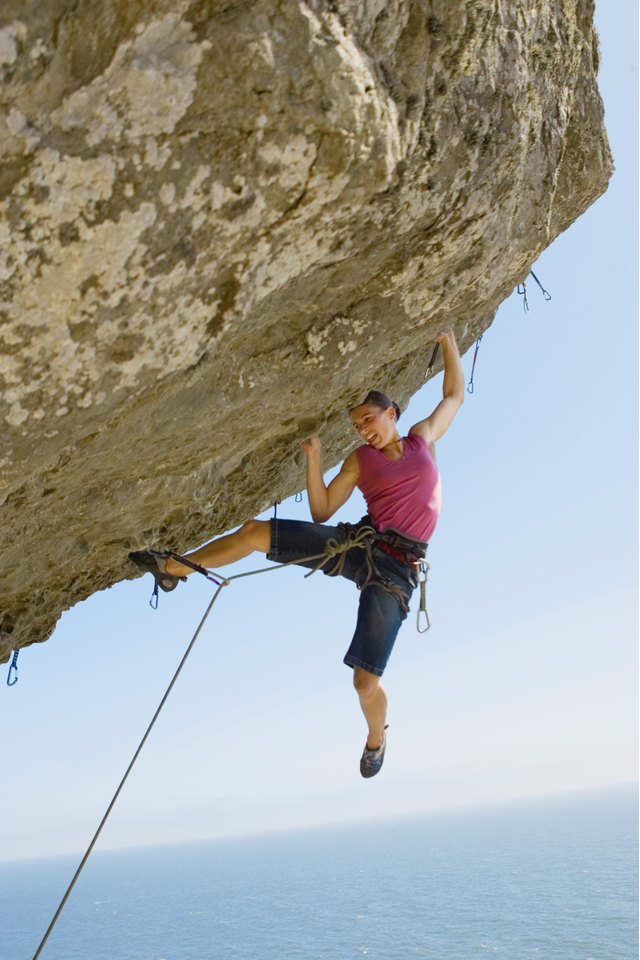How Much Upper Body Is Used When Rock Climbing?

Beginning climbers often try to haul themselves up their first route by brute strength -- doing a pullup every time they switch from one handhold to the next. You do need a lot of upper-body strength for rock climbing, but it’s almost never used in isolation. Instead you use the pulling muscles of your upper body, and occasionally the pushing muscles, too, in conjunction with your core and, to a lesser degree, your legs.
Pulling Muscles
All the large pulling muscles of your back, including your latissimus dorsi and trapezius muscles, engage during rock climbing movements. The pulling muscles in your arms -- including the biceps, brachioradialis and brachialis, also assist whenever elbow flexion is involved. You may use these powerful pulling muscles to help you move up the wall, or engage them isometrically -- without moving -- to help hold yourself in place. Exactly how much of your weight each muscle actually supports, however, varies depending on your body position.
Smaller muscles, including your rhomboids, deltoids and rotator cuff muscles, are critical when climbing; however, their primary role is stabilizing your shoulder blades so that the more powerful pulling muscles have a solid base from which to exert force.
Pushing Muscles
Because pulling upper-body movements are much more common in climbing than pushing movements, you may have to specifically train the pushing muscles of your upper body -- including your pectorals and triceps -- to avoid muscular imbalances. However, you do use these muscles for a few rock climbing moves, primarily the mantle. A mantle involves extending your arm below you and pushing up on a climbing hold -- instead of pulling down on a hold above you -- to support your weight.
Grip Strength
Before you can bring the larger muscles of your body to bear, you have to be able to maintain your grip on climbing holds. A 2008 study published in the International Journal of Exercise Science showed that actual climbing movements produce more forearm muscle activity than training with handgrip dynamometers, or grip trainers as they’re sometimes known, so actual climbing remains one of the best ways to improve your forearm strength. Some climbers also practice hanging from specially contoured climbing holds mounted on a board; these boards are known as fingerboards or hangboards.
Not Only Upper Body
Even though upper-body strength and endurance are important for climbing, overall body tension and core strength matter, too. Flexibility is also very important. Think of your core muscles -- primarily your abdominals and erector spinae -- as the glue that holds your body together, transferring force from your upper body to your lower body as you transition through various body positions on the climbing wall.
